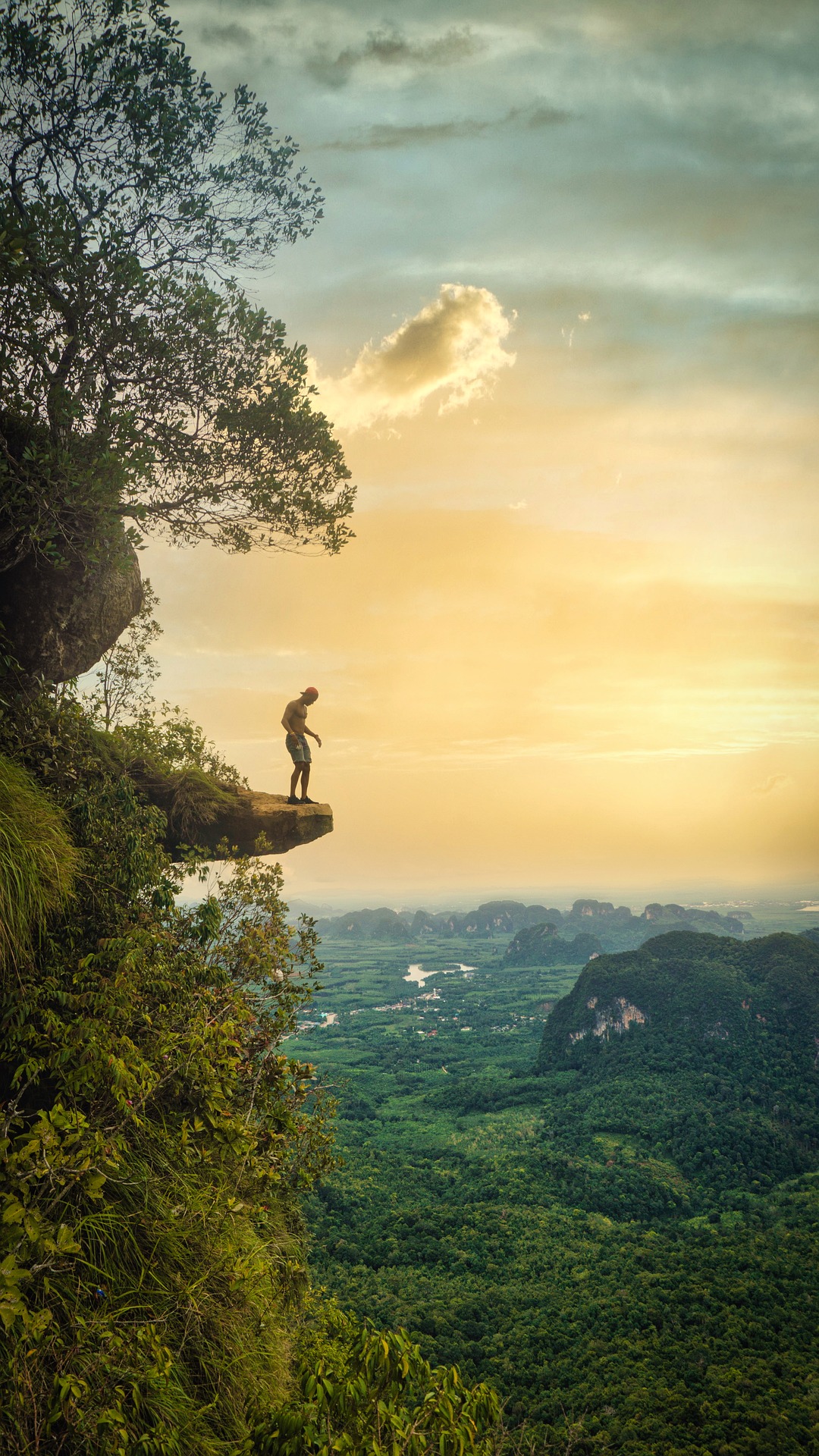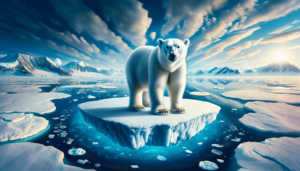Introduction
The Root of the Problem
Deforestation and climate change. Words that might sound as exciting as last year’s tax returns, but it’s a serious business. It’s not just about trees getting the axe; deforestation and climate change is a comprehensive and systematic removal of forestland. Think of it as shaving the planet’s head without asking for permission. This large-scale “bad haircut” has some real consequences.
- Environmental Impact: From soil erosion to loss of biodiversity, the trees are falling, and no one’s there to hear them… or are they?
- Climate Change Catalyst: Trees absorb carbon dioxide and, without them, this greenhouse gas stays in the atmosphere, warming the planet like a badly timed fever.
- Economic Consequences: Forests aren’t just pretty to look at; they’re also a source of livelihood for millions. From timber to tourism, those fallen trees have a domino effect on economies.
Deforestation and Climate Change: Why We Should Care?
Still not convinced? Let’s take a stroll into the metaphorical forest of reasons to care.
- It’s Our Home: Earth is the only planet with Netflix, after all.
- Health Matters: With the loss of trees, we lose a critical source of fresh air. It’s like living in a room filled with your uncle’s cigar smoke, only on a planetary scale.
- Climate Chaos: Unpredictable weather, melting ice caps, and more – it’s like Mother Nature’s having a wild party, and we’re uninvited.
- A Moral Issue: If you wouldn’t bulldoze your neighbor’s house, why the forest?
The Trees’ Side of the Story
Deforestation and Climate Change: The Lungs of the Earth
Forests do more than just stand there looking leafy and green. They’re the lungs of the planet, and we’re treating them like a pair of old gym shoes.
- Breathing Life: Trees take in carbon dioxide and breathe out oxygen. It’s a pretty fair trade until we come along with chainsaws.
- Home Sweet Home: Animals call forests home, from creepy crawlies to majestic tigers. We’re talking about real estate that makes Beverly Hills look like a bargain.
- Water Cycle Warriors: Trees also play a role in the water cycle. They suck up water and release it into the atmosphere. Deforestation and climate change means chopping them down and unplugging the planet’s humidifier.
Trees Talk, If You Listen
How Trees Communicate
It’s not a sci-fi movie plot; trees genuinely communicate.
- Root Networking: Through a complex network of roots and fungi, they send messages. “Hey, watch out for that bug!” or “I need some nutrients over here!”
- Treebook: No, it’s not the latest social media trend, but trees do “like” and “share” with each other in their unique way.
-
Indigenous Communities and Deforestation and Climate Change Aftershocks
The calamitous repercussions of deforestation and climate change are felt globally, but indigenous communities, rooted deeply in the heart of these forests, feel the brunt firsthand.
Cultural Roots: For centuries, indigenous communities have woven their tales, traditions, and very existence around the sprawling embrace of forests. To them, every tree is a chapter, every rustling leaf a whispered story. As deforestation chips away at these trees, it erases their history, stripping them of their identity.
Economic Dependence: Living harmoniously with nature, indigenous communities have always tapped into the forest’s vast resources for survival. From berries that serve as food to herbs that heal, these forests are their open pantries. Deforestation not just deprives them of these resources but upends their entire economic structure.
Spiritual Connection: The deep spiritual ties that indigenous people share with forests are incomparable. Forests aren’t just stretches of greenery; they are sacred sanctuaries, and places of worship, where every tree and river is revered. The scars of deforestation are not just on the land but on the very soul of these communities.
The Global Ramifications of Deforestation
Deforestation and climate change aren’t just environmental issues; they are alarms heralding a global crisis. From the heart-wrenching cries of the Amazon to the rapidly changing landscapes of Madagascar, the evidence is undeniable. Yet, amid this looming threat, lies an opportunity for change. Every individual holds the power to make a difference, whether through planting a tree or supporting eco-friendly initiatives. This battle against deforestation and climate change isn’t just for the earth; it’s a call to safeguard our future, the myriad species we coexist with, and the legacy we leave behind. The time for action is now, lest we become mere footnotes in the grand narrative of our planet.
The Forest’s Understated Protectors
While colossal trees often become the face of the fight against deforestation and climate change, the unsung heroes are the smaller forest plants that silently contribute to the ecosystem’s balance.
Soil Soldiers: These often-overlooked plants are the guardians of the forest floor. With an intricate network of roots, they bind the soil, combatting the erosion that intensifies with deforestation and climate change. Think of them as the anchors that hold the forest together.
Food Providers: Nestled under towering canopies, these understory plants nourish a myriad of wildlife. From vibrant fruits to nutritious leaves, they ensure that the forest’s food chain remains unbroken, especially critical in biodiverse-rich areas like tropical rainforests.
Medicine Cabinets: The smaller flora of the forests are treasure troves of potential medicinal properties. As we grapple with deforestation and climate change, the urgency to study and preserve these botanical wonders grows. Their loss could mean bypassing cures for illnesses that plague humanity.
The Chain Reaction of Climate Change
Greenhouse Gases – Not a Greenhouse Party!
Deforestation and climate change are inextricably linked through the cycle of greenhouse gases.
-
Trees as Carbon Sinks: Forests, especially mature trees, absorb vast amounts of CO2. When subjected to deforestation, these carbon vaults release their stored CO2, exacerbating climate change.
-
Fossil Fuels: The burning of fossil fuels has dramatically increased CO2 levels. With deforestation reducing the number of trees to reabsorb this CO2, our planet’s temperature regulation is thrown off balance.
-
Methane Madness: Methane, while less talked about than CO2, is an even more potent greenhouse gas. Deforestation and climate change can disrupt natural systems, causing increased methane release.
Ice Melting: No Ice Cream Here
Deforestation and climate change have cascading effects on our planet’s polar regions.
-
Effects on Wildlife: Polar bears, dependent on sea ice to hunt, find their hunting grounds shrinking. Penguins too face disrupted breeding patterns due to changing ice landscapes. Fish species, sensitive to temperature, find their habitats warming, leading to migration and behavioral changes.
-
Rising Sea Levels: Melting ice caps contribute to rising sea levels, threatening coastal communities and ecosystems. This doesn’t just endanger island nations but also has profound economic implications, especially in sectors like tourism and fisheries.
-
Weather Gone Wild: One of the more unpredictable outcomes of deforestation and climate change is its effect on global weather patterns. Increased storms, more frequent droughts, and shifting rainfall patterns can disrupt agriculture and make certain regions less habitable.
In summary, deforestation and climate change present a domino effect on ecosystems, economies, and societies worldwide. Recognizing the profound implications of each toppled tree or increased degree in temperature helps drive home the urgency of addressing these intertwined issues.
-
The Human Impact: It’s Not Just About Polar Bears
The climate change domino effect reaches us too.
- Health Hazards: From heatwaves to new disease patterns, it’s like playing Whack-a-Mole with health risks.
- Migration Movements: As lands become uninhabitable, people move. It’s a massive game of musical chairs but with homes and livelihoods at stake.
- Economic Ebb and Flow: The changing climate affects industries from farming to insurance. It’s like trying to build a house of cards in a windstorm.
The chain reaction of climate change, with deforestation as a significant player, is a complex and multifaceted issue. It’s not just about hotter summers or the odd weather pattern. It’s a global shift, a change in the very fabric of life on Earth. From the air we breathe to the food we eat, the ripples are felt everywhere. It’s like pulling on a loose thread on a sweater, only to find you’ve unraveled the whole thing.
This complex issue needs more than just awareness; it requires action. Whether it’s planting a tree, using less plastic, or supporting green policies, every step counts. Remember, Rome wasn’t built in a day, but with collective effort, we can rebuild our planet’s climate stability.
Deforestation and Climate Change: How You Can Help
Plant a Tree: It’s Easier Than Building a LEGO Castle
Planting a tree might seem like small beans, but those beans can grow into mighty oaks! Whether in your backyard or through organizations, a tree planted is a step towards healing.
- Join Tree Planting Campaigns: Look for local organizations. It’s like a community potluck, but with saplings.
- Plant Smart: Choose local species. It’s like matchmaking but for trees and soil.
Reduce, Reuse, and Recycle: The 3 R’s of Being Cool
It’s not just a catchy slogan; it’s a lifestyle.
- Reduce Waste: Buy only what you need, like going on a diet but for trash.
- Reuse What You Can: Old jars, bags, clothes. It’s like thrift shopping in your house.
- Recycle Properly: Know what goes in the recycling bin. It’s not rocket science; it’s bin science!
Support Sustainable Products: Become a Conscious Consumer
Think of shopping as voting with your wallet.
- Look for Certifications: Like fair trade and sustainable forestry labels. It’s like checking the ingredients but for ethics.
- Support Responsible Brands: It’s like befriending the good guys in a movie.
Spread the Word: Become an Earth Ambassador
Sometimes, talking does make a difference.
- Educate Yourself and Others: Knowledge is power, and not just in trivia games.
- Use Social Media: Share, like, tweet for the planet. It’s like being a celebrity but for a good cause.
Deforestation and Climate Change Around the World: A Global Haircut
Let’s take a look at a few examples of deforestation and climate change from around the world:
Brazil: The Amazon’s Cry
The Amazon Rainforest, often called the ‘lungs of the Earth’, has been losing trees faster than a shedding dog loses fur. Logging, mining, agriculture (especially soy and beef production), and illegal land grabbing are leading to a forest loss nightmare.
- Impact: Loss of biodiversity, indigenous community displacement, and regional climate changes. It’s like taking a sledgehammer to an ecosystem.
- What’s Being Done: Conservation efforts, law enforcement, and sustainable development. But it’s an uphill battle, like trying to teach a cat to fetch.

Indonesia: A Palm Oil Predicament
Indonesia’s lush forests are turning into palm oil plantations at a staggering rate.
- Impact: Endangered species like the orangutan are losing homes. It’s like evicting them without notice.
- What’s Being Done: Sustainable palm oil initiatives are like a ray of hope, but more needs to be done.
Madagascar: An Island’s Tale of Loss
Madagascar’s unique ecosystems are under threat due to logging and agriculture.
- Impact: Rare species face extinction, and local communities suffer. It’s like losing a treasure trove of nature.
- What’s Being Done: Conservation parks and international aid. But it’s like a band-aid on a big wound.
Deforestation and Climate Change: In a Nutshell
Deforestation and climate change are deeply intertwined. When we remove forests, we don’t just lose trees but exacerbate the greenhouse effect and speed up global warming. Forests play a crucial role as the Earth’s lungs, absorbing vast amounts of carbon dioxide. Destroying these green expanses releases this stored carbon, contributing to climate change.
From the vast Amazon to unique places like Madagascar, deforestation endangers entire ecosystems. Many species that rely on these habitats are put at risk. However, there’s hope. Each person has the capacity to contribute positively, be it through planting a tree, advocating for sustainable choices, or supporting eco-friendly initiatives.
It’s not just about the environment. It’s about ensuring a vibrant and secure future for everyone—humans and wildlife alike.
FAQs
-
Can I really make a difference by planting one tree?
- Certainly! A single tree might seem like a small contribution, but its impact is significant. Just as every vote matters in an election, every tree plays a role in combating climate change. Beyond providing oxygen and absorbing carbon dioxide, trees offer shade, soil preservation, and support biodiversity. Over its life, a tree can offset approximately a ton of CO2. It stands as a beacon of hope and progression.
-
What’s the biggest cause of deforestation?
- Agriculture, logging, and urbanization stand out as primary culprits. Forests are frequently cleared to make room for crops or grazing livestock. Commodities such as soy, palm oil, and beef are often linked to this. Logging, meanwhile, satisfies global demands for timber and paper. As cities expand, they encroach on forested areas, contributing to the problem. Addressing this requires multi-dimensional solutions.
-
How does deforestation affect animals?
- The consequences are severe. When we remove forests, we’re taking away habitats. Animals face displacement, diminished food sources, and heightened predation risks. Furthermore, habitat fragmentation can lead to isolated “island” populations, making species more vulnerable to inbreeding and disease.
-
Is climate change really linked to deforestation?
-
The link is undeniable. Forests play an essential role in stabilizing the Earth’s climate. By absorbing carbon dioxide, they act as a buffer against climate change. When destroyed, not only is this buffer removed, but stored carbon is released, magnifying the greenhouse effect.
-
-
What can governments do to stop deforestation?
- Governments possess vast influence. By establishing and enforcing conservation laws, they can regulate logging and land use. Incentives for sustainable agriculture and reforestation can also be provided. Collaborating with NGOs and local communities can ensure effective and equitable solutions. Public awareness campaigns play a key role in driving positive change.
To tackle deforestation and climate change, we need unity, knowledge, and proactive efforts. The means are within our reach, and the time to act is now.




